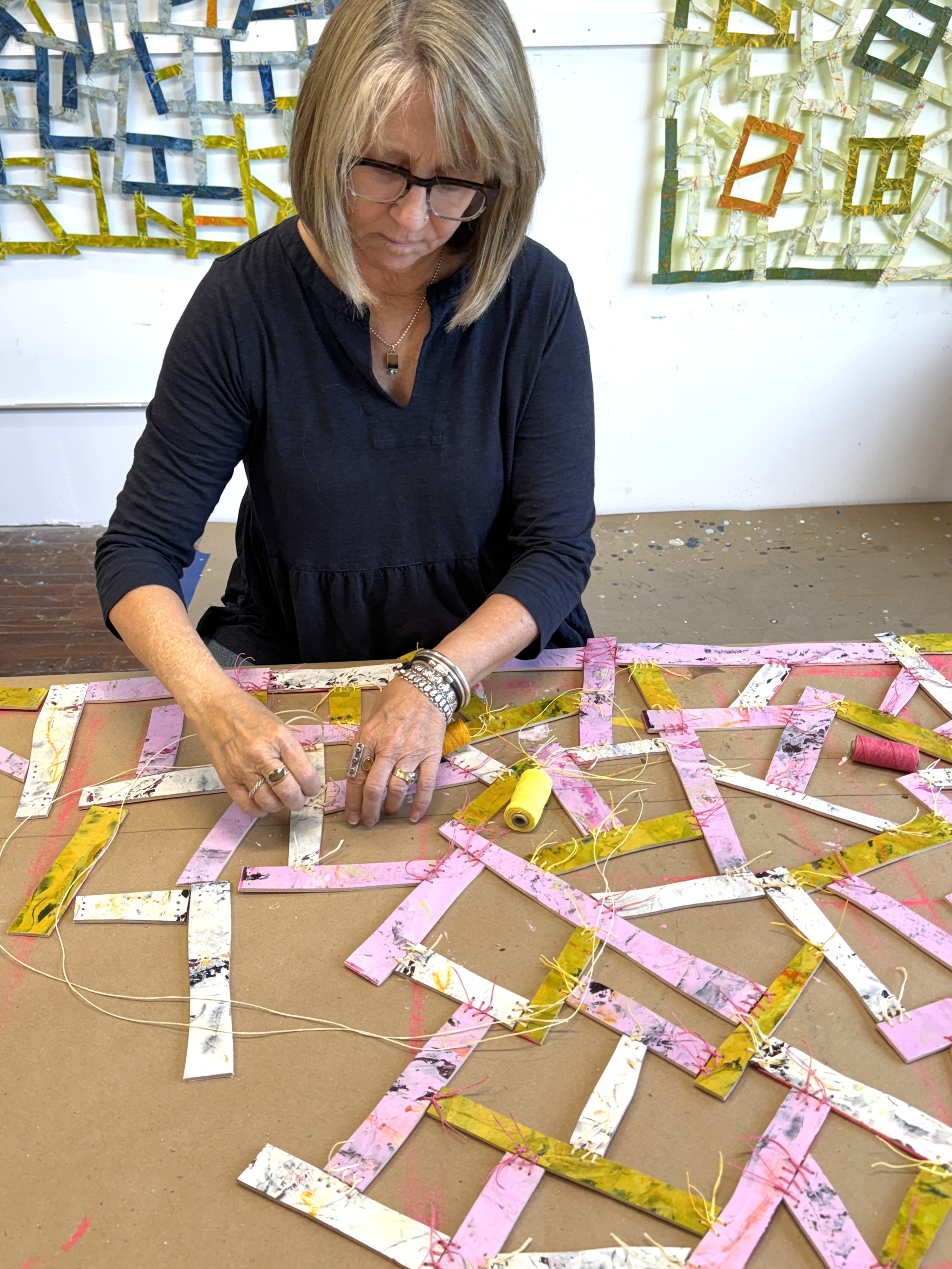Statement
Originating from a deep interest in textile structures, my work is fundamentally influenced by the grid which has a central role in the making of decorative patterns and geometric constructions. Embracing the meditative act of repetitive labor, I intuitively build both 2D and 3D structures using materials such as wood, cardboard, paint, and thread. Through the rigorous hand-stitching of individual elements, I create compositions where each piece interacts with the others, gradually forming a complex whole. This process not only reflects the precision and patience inherent in textile traditions, but also allows me the tactile exploration of space, form, and structure. Like assembling pieces of a puzzle, each component is contingent on the previous stitched piece, with the final form gradually revealing itself through the process. The resulting work, which may evoke the patterns of quilts, maps, or networks, challenges traditional categorizations and blurs the boundaries between painting, textiles, and sculpture.
The tension between order and chaos along with fragility and stability, is how I choose to explore what I can control and what is beyond control. I employ stitching as powerful symbol of both repair and vulnerability. It is a metaphor for how we try to hold things together, the interdependence of individual elements, and the constant strain of maintaining a cohesive union. It’s a symbol of how easily things might become undone, how tentatively they are joined, but also holds the possibility of being mended back together.
Biography
Originally from the midwest, Susan Stover received a BFA from Miami University in Oxford, Ohio and her MFA from California College of Art in Oakland, CA. Both degrees concentrated in textiles and painting. Susan has been on the faculty of University of California - Davis, staff at California College of Art, and worked for 10 years with Jacquard Products, a textile paint and dye manufacturer. She has taught extensively including workshops in Australia, India, Italy, France, Mexico and throughout the U.S.
Susan has recently relocated from the northern California wine country to the Hudson Valley in New York. She is represented by Carrie Haddad Gallery in Hudson, NY and Cura Contemporary in Morgan Hill, CA.

